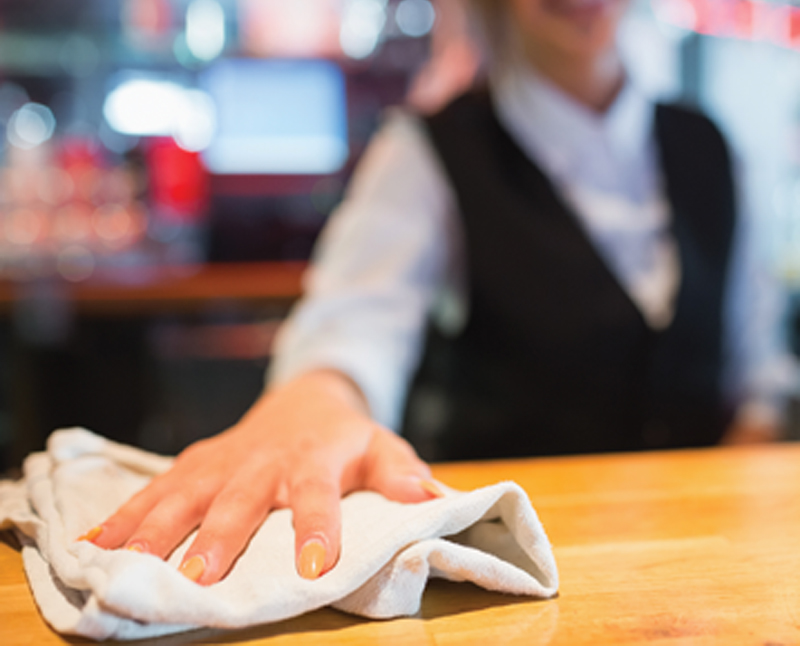We have accounts with several large restaurants to wash their bar mops, towels, and rags. I’ve heard of rags and towels – even clean ones – spontaneously combusting. Is there a specific process to help guard against this, as well as a recommended timeline in which to replace current rags with new ones?
Restaurant towels, rags and bar mops will contain oils and grease. To best get these items clean, use a high-surfactant detergent in a hot-water wash cycle, with a small amount of fabric softener. Be aware that too much fabric softener will create water repellency in the fabric.
Yes, spontaneous combustion can occur, especially when washing items with a detergent that features a large amount of alkali, which is a hot chemical. In fact, if you were to place a small amount alkali in your hand and then add a few drops of water to it, you’d actually begin to feel it getting warm in your hand.
Therefore, if washing with a high-alkali detergent, be sure that all of the detergent rinses out of the garments before drying them. Also, don’t leave wet items sitting in a closed container or a pile. It’s always best to dry laundered items immediately after thoroughly washing and rinsing them.
The lifecycle of restaurant towels and bar mops can vary, but I’d recommend replacing these items once the surface fabric is worn off.
My husband and I are in the laundry and drycleaning businesses. We do a good amount of heavy starching on jeans and button-up shirts. Recently, a customer asked to have a cotton/poly blend western shirt heavily starched. We told him that the shirt probably wouldn’t hold the starch very well, but he insisted. So, we starched it with a combination of powdered and liquid starch, and then pressed it on our shirt press.
The white shirt turned baby blue everywhere the metal plates touched the shirt. Full disclosure: the liquid starch may have been a blue-tinted starch. However, I’ve never seen anything like this in 15 years in business. Do you have any insight into why this might have occurred?
Some starches are made for synthetic fabrics, while others are designed for cotton garments. When you mix the two together, you could possibly seal in the one starch with the other, which might prevent that bluish tint from being rinsed out of the fabric. Then, when pressing the garment, that process exposed the light blue shade that hadn’t been rinsed out.
I’m considering selling my laundromat. Should I advertise in the local newspaper? How do I even begin this process?
In you’re thinking about selling, you’ve got three calls to make. The first one is to your accountant, who will be able to gauge any tax liabilities on your end.
Secondly, call a local business broker who specializes in laundromats. This professional will handle all of the marketing and advertising for the sale, along with some of the legal work as well. A good broker will be able to tell you what your business is truly worth in your marketplace and may even have a list of potential buyers for your store.
Lastly, contact a lawyer to handle all of the intricate legalities concerning the sale of your laundry business.
I strongly recommend that you call all three, but you should probably start with your accountant.












